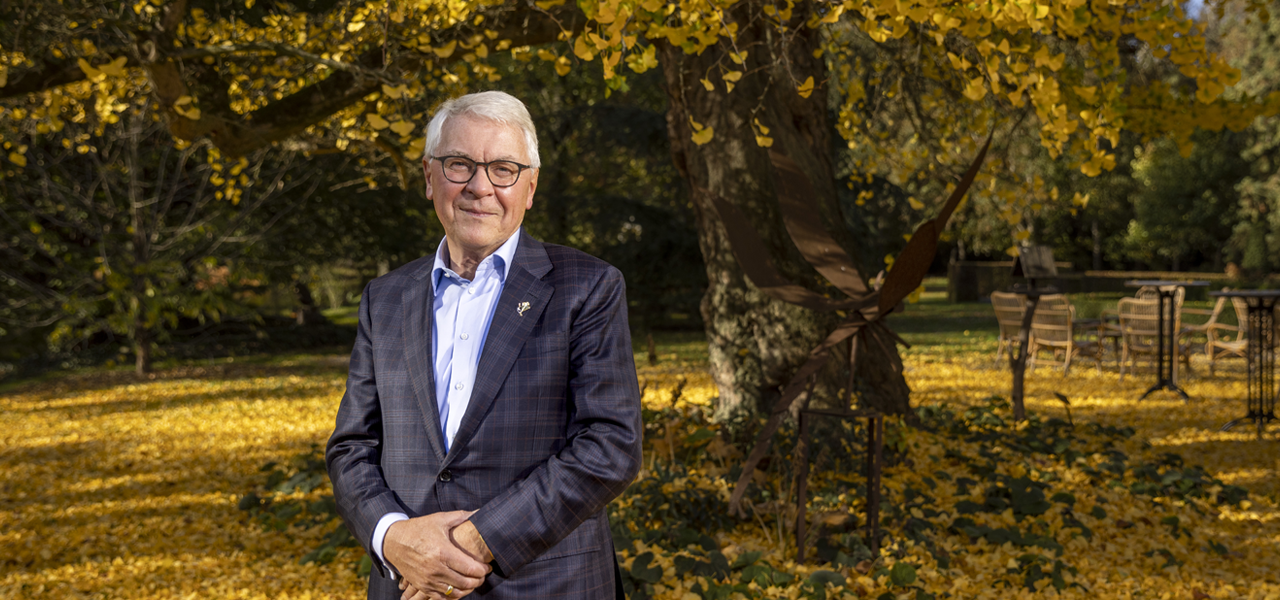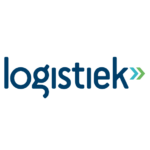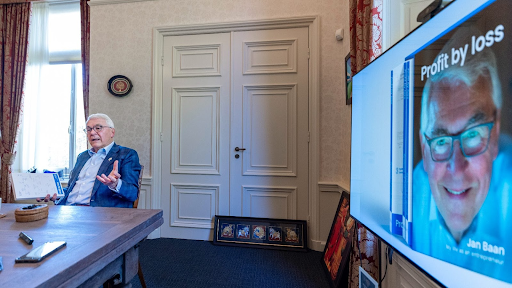 For more than forty years, Jan Baan has refused to accept the inadequate way companies – also in logistics – handle data. “It can all be done ten times faster, cheaper, and more effectively.” He explains how to do this in his recently published autobiography, written from experience, driven by a mission: to bridge the gap between technology and existing data systems.
For more than forty years, Jan Baan has refused to accept the inadequate way companies – also in logistics – handle data. “It can all be done ten times faster, cheaper, and more effectively.” He explains how to do this in his recently published autobiography, written from experience, driven by a mission: to bridge the gap between technology and existing data systems.
“You’re always busy saying farewell,” says Jan Baan in an interview with Logistiek.nl. “But every time, you’re still there.” Not only that, the founder and shareholder of Vanenburg Group and a trusted pillar in the world of (logistical) business software, has written a three-volume book with new and innovative insight that is closely linked to the companies he headed: Baan Company, Cordys and Vanenburg.
Taking it easy – but only when time permits
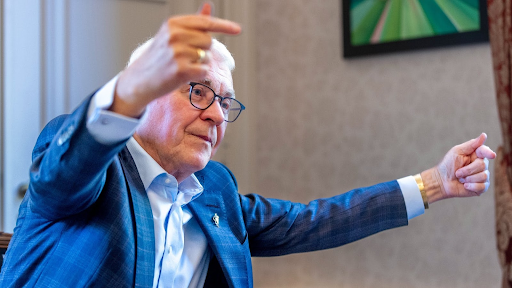 By now, Jan Baan is 76 years old, but he’s just as dynamic as ever. He recently took a driving exam to obtain an HGV (truck driving) license; not that he aspires to transport goods, but to head out with a sturdy, large-sized motorhome that offers enough room for him to sit separately and do what he loves to do best instead: contemplate the business, the field of logistics and the technology to take that field to the next level. At his age, he takes it easy when he can, which is less often than his immediate surroundings consider good for him; he has however, handed over the operational responsibility of Vanenburg to his sons.
By now, Jan Baan is 76 years old, but he’s just as dynamic as ever. He recently took a driving exam to obtain an HGV (truck driving) license; not that he aspires to transport goods, but to head out with a sturdy, large-sized motorhome that offers enough room for him to sit separately and do what he loves to do best instead: contemplate the business, the field of logistics and the technology to take that field to the next level. At his age, he takes it easy when he can, which is less often than his immediate surroundings consider good for him; he has however, handed over the operational responsibility of Vanenburg to his sons.
“Make sure tasks are really geared towards the person who must carry them out”
Baan is a man of his word – in various ways. The first version of his autobiography was 1200 pages thick. It has been slimmed down to three volumes of approx. 180 pages each. He gladly takes his audience along in a discourse that is just bursting with visions and vistas, in which he freely draws from various experiences; also experiences that left a scar.
Here are a few important lessons and recommendations he is happy to share with you and which he elaborately describes in his book with the telling title: Profit by loss.
Lesson 1: everything goes ten times faster
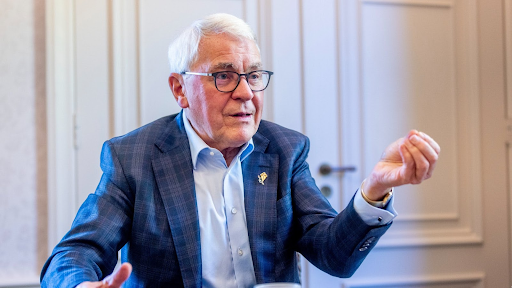 Everything was better in the past; this is not something you will hear Jan say. Quite the contrary, actually. New technology makes everything ten times faster, ten times cheaper and ten times more effective. He harks back to the prediction that management guru Peter Drucker made nearly thirty years ago: the productivity of the knowledge worker will at least double. That’s true, he says. Thanks to the optimal use and implementation of data, because according to Baan, data is the new gold.
Everything was better in the past; this is not something you will hear Jan say. Quite the contrary, actually. New technology makes everything ten times faster, ten times cheaper and ten times more effective. He harks back to the prediction that management guru Peter Drucker made nearly thirty years ago: the productivity of the knowledge worker will at least double. That’s true, he says. Thanks to the optimal use and implementation of data, because according to Baan, data is the new gold.
With this idea in mind, he began writing and rewriting his three-volume book, in which he describes the various stages of data development. Not entirely coincidentally, this seamlessly correlates with the timeline of his companies which he has headed for forty-four years now: Baan Company, Cordys and Vanenburg.
“From data to information, knowledge and ultimately, wisdom”
The stages he refers to are [1] systems of record – data to streamline processes, and [2] systems of differentiation – information that unlocks silos and sharing data across many links, to [3] systems of innovation – knowledge on the basis of available information that helps provide task-oriented, maximum support for individual work flows.
Translated into practice, he says: “This gives people in logistics insight into what the goods to be delivered are precisely intended for. This insight has largely been missing until now. Machine learning and Big Data offer us possibilities. But it is up to the human, who must apply that in the workflow. That’s what I call “wisdom”. So from data, to information, to knowledge with the help of smart algorithms. You won’t be able to acquire that knowledge via an app or cell phone, however. As an individual, you convert your knowledge into wisdom. And only then will you really be making a difference.”
LESSON 2: logistics are the core of business
“Production is not the core of business, logistics are.” Baan sees production as the starting point, but ultimately companies are evaluated on the moment of delivery, thus logistics. “Precisely there, you need to know where the bottlenecks are. Only at this moment, logistics do not utilise the possibilities that exist.”
Many companies have tried to use Baan’s software to get a grip on their logistical processes. Many succeeded in this. Some then attempted to break down the silos in the chain and establish a data exchange via the Internet. He believes they used such data silos as WMS, TMS, and inventory management systems. But, that was quite a daunting task. “Everything we apply in logistics to information technology actually still dates back to before the Internet age and is antiquated. It was too complicated back then, he says today. And this is often still the case. “You had to open some forty-odd screens in order to retrieve data from everywhere.
It was exactly on this point that he made important progress with Cordys, only the acceptation in the market for this way of working was seriously lacking. “We were ahead of the music. Everything was available in the cloud, or so we thought, but in practice, little of that materialised.” But, according to Baan, it can be said that the implementations continue to run to satisfaction.
LESSON 3: make all data available on mobile devices
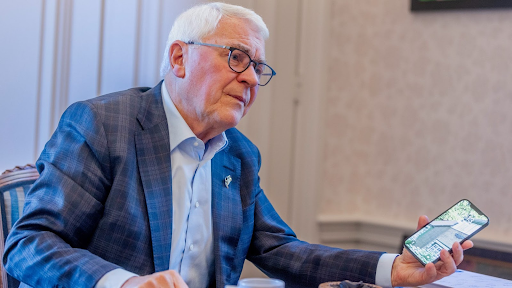 In 2013, Baan sold the Cordys company to OpenText (Canada) but held on to the ideas in order to then take a couple of years for thorough analysis. Against the backdrop of what he knows now, he introduces new insight. “Logistical organisations have had systems to process data for years. But, they can do very little with it,” says Baan. In his eyes, they fail to utilise the latest technologies. Some route planning with Google Maps, and that’s about it. Even though there is also other data available to make the process run more efficiently. He points at his smartphone, that’s the new technology, much faster than the mainframes of old, but making data available from the back-end systems is quite complicated. “You should actually be able to do everything on your cell phone. Not with twenty users, but with many more. There are too many non-consumers of data, while that information is still important to them (and for businesses). This is slowly changing now.”
In 2013, Baan sold the Cordys company to OpenText (Canada) but held on to the ideas in order to then take a couple of years for thorough analysis. Against the backdrop of what he knows now, he introduces new insight. “Logistical organisations have had systems to process data for years. But, they can do very little with it,” says Baan. In his eyes, they fail to utilise the latest technologies. Some route planning with Google Maps, and that’s about it. Even though there is also other data available to make the process run more efficiently. He points at his smartphone, that’s the new technology, much faster than the mainframes of old, but making data available from the back-end systems is quite complicated. “You should actually be able to do everything on your cell phone. Not with twenty users, but with many more. There are too many non-consumers of data, while that information is still important to them (and for businesses). This is slowly changing now.”
“Logistics is not utilizing the possibilities that are already there”
In order to give shape to that development, Vanenburg is introducing the Rappit Developer platform with which the development of applications can take place faster. Briefly put, with the platform, it is possible to head the process yourself and add functionality, without having to go back to the one who once developed and implemented the software. “No run-time version that blocks you, but something with which I can generate open source components for open source tools.” For Vanenburg, Google is an important partner in this. In addition to what Google has to offer when it comes to data, with this platform, Vanenburg unlocks business information.
LESSON 4: keep what you have, and modernize it
The core message that Baan wants to convey with Vanenburg is this: don’t get rid of the systems you have that work well. But modernize them. “There is so much old equipment that will still suffice. A little enhancement will already be enough to achieve a considerable renewal.
Ensure that employees and chain partners are able to work with the new technology. It’s not necessary to get rid of existing systems where much data and functionality can be found.
Baan still sees that the data is not customised to the specific tasks and workflows.
“Start working on that. Ensure that tasks are integrated and geared towards what you as person will be doing. We have been talking about digitisation for some time now, but it will only happen if it is truly supporting. Companies sometimes say they are working digitally, but they send each other PDFs. You can’t do anything with that in the supply chain. Only when the processes have been truly integrated, will you be able to make the next step towards integrated tasks.”
Ideally, it should be so that personalized data is available right away for various people who need it in the chain. And that’s where such technological innovations as Big Data and machine learning come into play.
LESSON 5: scars apparently make you more beautiful
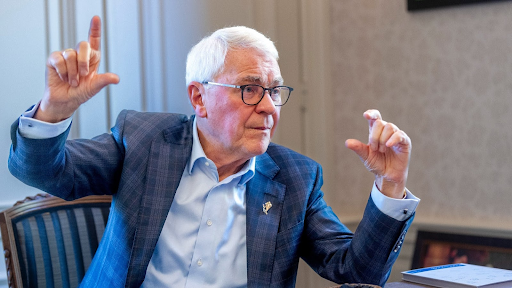 “I ‘ve been up and I’ve been down.” This how Baan sums up his impressive career as software entrepreneur. “If you only live for your work, it’s a little pathetic. But your work should contribute to life, so that it has a social value and not only a personal value. “I received applause as an entrepreneur, but I couldn’t enjoy it. Because work awaits and never stops. In this regard, you must also make less popular decisions. That’s entrepreneurship.”
“I ‘ve been up and I’ve been down.” This how Baan sums up his impressive career as software entrepreneur. “If you only live for your work, it’s a little pathetic. But your work should contribute to life, so that it has a social value and not only a personal value. “I received applause as an entrepreneur, but I couldn’t enjoy it. Because work awaits and never stops. In this regard, you must also make less popular decisions. That’s entrepreneurship.”
He calls himself: not a very good investor. He came to this conclusion from the lack of commercial success of Cordys. He personally continued believe in its success in the long term. This didn’t happen, although the technology of Cordys at OpenText, which took over the company in 2013, still plays a crucial role in the heart of many companies. The common thread in his entrepreneurship – also at Baan Company, that was taken over by Infor at the end of the last century – is saying goodbye to that which was built; and that’s painful. “The best learning process occurs from a situation of pain,” is how he looks back at it.
“I correct my mistakes faster than others make mistakes”
LESSON 6: an entrepreneur is seldom a good manager
When a company becomes too big, the entrepreneurship declines. This is what Baan has learned from experience. “I was once a good manager in my little department and out of a bit of frustration started working for myself as a financial man with an understanding of logistical processes. As an entrepreneur, I discovered that I needed people around me who were better than me in their area of expertise. Then it’s not so difficult. I still do this today. I’m no good in monitoring progress. This must be due to a certain restlessness. My advantage is, that’s what I hear around me, that I correct mistakes faster than others make them. I see myself primarily as a composer. You bring elements together in order to then shape them into a whole.”
The drive for innovation is still there, that is his contribution today to the company that his sons Paul, Ardjan and Bernhard head every day. “They hardly keep me informed, except at the shareholders meeting,” says the only shareholder of Vanenburg with a feigned tone of complaint. He is content in his role and keeps himself sharp by developing vision and strategy. “It’s not a must anymore, but I really enjoy doing it.”
LESSON 7: perfect is the enemy of good
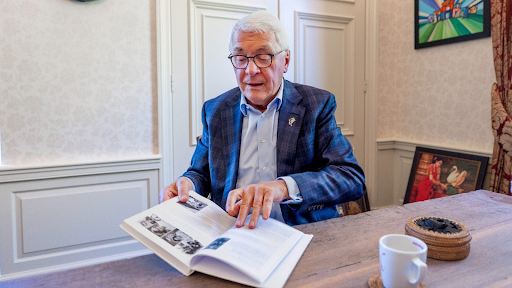 Constantly improving is indispensable in entrepreneurship, certainly when it comes to information technology. But, Baan has no need for perfectionists. “Entrepreneurs must be handy; good is often good enough, so stick with that. But do it with a vision, a certain direction we embark on together; ensure constant improvement and know that we are on the right path. Left or right, it doesn’t matter, don’t discuss it too much, as long we reach our goal. It’s about the product, not about the project to make the best possible product.”
Constantly improving is indispensable in entrepreneurship, certainly when it comes to information technology. But, Baan has no need for perfectionists. “Entrepreneurs must be handy; good is often good enough, so stick with that. But do it with a vision, a certain direction we embark on together; ensure constant improvement and know that we are on the right path. Left or right, it doesn’t matter, don’t discuss it too much, as long we reach our goal. It’s about the product, not about the project to make the best possible product.”
Simplifying IT and making it better suited for (logistics) professionals in business; it is a long-cherished desire. Baan knows this and throws out one more contention: IT does not understand business. “We as Vanenburg have bridged the gap between business and IT for the first time. What we offer is a toolbox that makes eighty percent of the solution available. For the remaining twenty percent, we collaborate with people who have mastered the business processes on their own. But in doing so, we don’t try to keep going to achieve the perfect end result, because we already achieve a result that is ten times better, ten times faster and ten times cheaper.”
“Good is often good enough, so stick with that”
This interview was conducted by Logistiek.nl. For the original interview in Dutch, click here.

